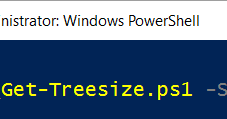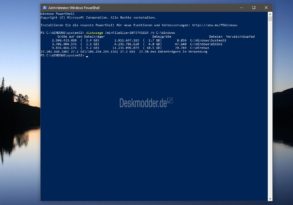
Afterwards you can delete the shadow copies beginning from the end as follows.Įxample : vssadmin Delete Shadows /For=D: /Oldest This will list you the number of shadow copies avilable. If you want to dig into every volume to see how many shadow copies exist you can use the below command. To check if this is the case you can use the VssAdmin.exe command line tool.Īs you can see below in the screenshot, in our case, on three different volumes, in total 54 GB shadow copies exists. You can also have lots of Volume Shadow Copies on your affected volume. Cleanup Volume Shadow Copies with VssAdmin.exe As you can see below in the screenshots there is more than 33GB of space which we can save.ģ. Right click on the C:\ Drive and on the General Tab please click on Disk Cleanup. I would strongly recommend you to use the Wizard instead of deleting the file and folders manually. To cleanup up these file and folders you can use the Windows Disk Cleanup Wizard. If you are using Windows 10 and if you are up to date you will most probably have an Windows.Old folder under the C:\ drive and Upgrade Logs. In Windows 10 all Feature Updates can be defined as a new Operating System therefore prior a Feature Update, the whole Operating System is backed up automatically during the installation of the Feature Update. The second point we should check to free up disk space are the old Windows Installation Files and Upgrade Logs. To figure out if we have big in size “Volume Shadow Copies”, “Hotfixes and Service Packs” we have to use some builtin Windows Command Line Tools. With this tool you will not able to detect the “Volume Shadow Copies” and backed up “Hotfixes and Service Packs”. If you see any suspicious big folders you can navigate to that and delete the unnecessary file and folders.

As you can see below the tool will give you an overview of the entire volume. To get an overview of your disks I would recommend to check the affected volumes with the free TreeSize Tool from Jam Software. Check the affected volume with the free Tool “TreeSize” from Jam Software Cleanup automatically backed up Hotfixes and Service Packs with Dism.exe.ġ. Cleanup Volume Shadow Copies with VssAdmin.exe.Ĥ.

Check the affected volume with the free Tool “TreeSize” from Jam Software.ģ. If you cannot figure out where all the free space has gone, there are several points you can check and do. The problem is that there are hundreds of these folders, so does anyone know a file explorer type tool that can (a) identify these recycle bin folders on mass e.g.In this tutorial, I will show you how to free up disk space in Windows on the boot and additional volumes. If I browse to them with Windows Explorer the folders appear empty (yes, hidden/system files are turned on), but it's via the wonderful TreeSize that I've spotted the files/folders are there, and TreeSize will delete them. These folders can have hundreds of MBs of files in. Whether this is related or not, as we migrated file servers last summer, I've spotted a $RECYCLE.BIN folder in many if not all of the students home folders. We then used group policy to turn off the recycle bin usage, and to delete files immediately. The students local recycle bins weren't showing anything though, so this was ultimately pointless. We spotted that when students were deleting files/folders, on their Win 7 clients, that the files/folders were going into the file server's recycle bin. We are running a 2008 R2 file server, on which are the students home folders.


 0 kommentar(er)
0 kommentar(er)
